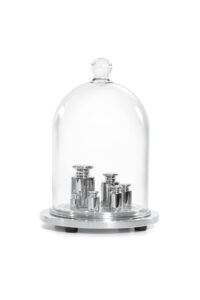
This article focuses on the differences between OIML and ASTM test weights.
Calibration weights are the most vital part of any laboratory. Its significance is to ensure that lab balances are given accurate results. Calibration weights are also assigned a class based on the weight’s accuracy or tolerance. The various sets of classes of weights include ASTM, OIML, and NIST. However, this article focuses on the differences between OIML and ASTM test weights.
What is the OIML?
The International Organization of Legal Metrology (OIML) is an intergovernmental organization that has provided systems and standards intending to harmonize legal metrology procedures since 1955. The OIML classes are E1, E2, F1, F2, M1, M2, and M3, from lowest to highest tolerance. In addition, OIML class weights are prevalent outside the United States.
Moreover, the OIML also does the following:
- Model regulations and documents for use by legal metrology authorities,
- Minimizes trade costs and barriers in a global market
- Facilitates the exchange of knowledge within the legal metrology community internationally
- Raises awareness about the benefit of a legal metrology infrastructure in a modern economy
What is ASTM?
ASTM International is a non-profit, non-governmental organization that creates voluntary consensus standards. Its mission is to serve global societal needs while positively impacting public health and safety, consumer confidence, and overall quality of life. ASTM International also supports countries that want to participate and benefit from internationally accepted standards. Their global volunteer technical experts use innovative services to enhance other lives and create a better working world.
Furthermore, the document ASTM E 617 has contributed to ASTM developing ten calibration weight classes. So, the higher the class number, the higher the tolerance level (and the less accurate) and the weight. Additionally, most lab applications require ASTM weights of class 4 or below. Overall, ASTM class weights are primarily prevalent in U.S. laboratories.
ASTM vs. OIML?
Whether you use ASTM or OIML, the key is to remain consistent in your weight set. Even though ASTM is an American Institute, you will find ASTM weights used outside the U.S., especially at manufacturing facilities of US-based companies. The most critical aspect is ensuring you have the correct weight for your scale or balance.
CONTACT THE SCALE PEOPLE FOR WEIGHING EQUIPMENT AND CALIBRATION SERVICES!
Since 1956, The Scale People have earned a reputation as the best service provider for calibrating and repairing weighing equipment in the mid-Atlantic area. Our sales team can help you to find the best weighing equipment for your application. We currently have offices in Columbia, MD, and Newport News, VA, but we offer our services nationwide. Over the years, we have built a long list of satisfied clients from various industries, including pharmaceutical, food and beverage, and government manufacturing. We are a fully ISO/IEC 17025:2017 accredited service company offering calibration for balances, scales, dynamometers, force measurements, test weights, pipettes, and more. All our services have a 100% satisfaction guarantee. We’re only a phone call away at +1 (800) 451-9593. Follow us on Facebook, Twitter, and LinkedIn to learn more about our work.
